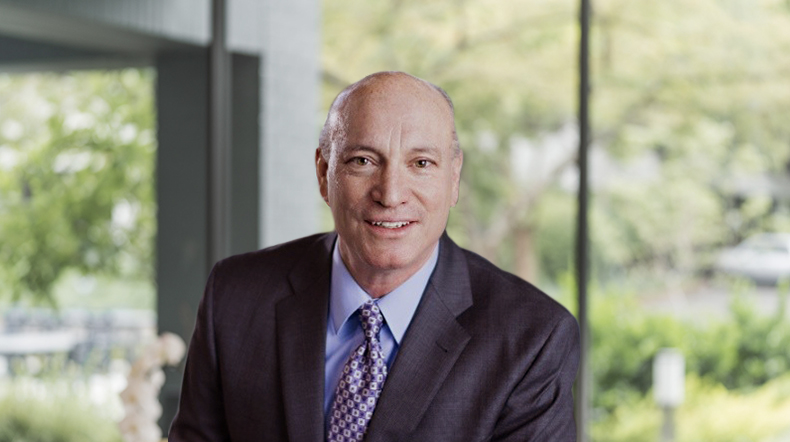By Lisa Gordon | June 7, 2023
One month after taking the helm of Oregon-based Erickson Inc., helicopter industry veteran Barry Kohler sat down with Vertical to discuss his vision for the 52-year-old company.
Erickson currently owns an operating fleet of 15 S-64 Air Crane heavy lift helicopters, and its 500-plus employees deliver OEM support to an additional 44 aircraft around the world.
Here, Kohler discusses the company’s future direction as an OEM, operator, and maintenance, repair and overhaul (MRO) provider.

Vertical: You joined Erickson on May 1, 2023. Why did you decide to take on the CEO role?
Barry Kohler: I think it was an alignment of interests. I’d been looking for the right opportunity and was approached by the board. It was clear the board was engaged with the company and very knowledgeable. At the same time, Erickson has a great mission and is an iconic brand. What sealed it is when I met the leadership team members, who are very enthused about their mission of protecting people and property. The Air Crane does great things. It’s a mission that many are passionate about.
Vertical: How will your 40 years of industry experience help you in your new role?
BK: I think it’s the breadth of my aerospace experience that will help me. I’ve done everything from being a research engineer to running operations, to being in business leadership. I have a lot of experience with companies that are larger than Erickson. Working for some of the big players in the industry gave me a very good education on processes and systems that work. Now, it’s a matter of applying that to a smaller company in an efficient manner. One other point is that I have worked for helicopter OEMs and other aerospace OEMs, and we’ll be looking to expand our OEM capability as we move forward. That will be a core piece of our future strategy.
Vertical: The press release announcing your appointment mentions that you are joining the company at a transformational time. How so?
BK: The last decade has been a transformational time for all of us in the helicopter industry! We’ve seen a big economic downturn, we saw the energy market crushed, we saw large assets subjected to downward valuations, increased competition, and more assets in the space. Everybody wants to be in the utility mission space, in particular, and everybody wants to be an MRO. For Erickson, transformation really has to do with the fact that there is more and more focus on aerial firefighting. The services we provide will continue to be more in demand. At the same time, there is a lot of competition. The core of our transformation is going to be in doing what we do better, being more efficient, and laser-focused on our competencies. A big part of this will be attracting a world-class workforce. We must be really good at developing and training our talent and retaining them. Lastly, we have the S-64, which has been around for a long time. We are working to modernize it with new things like composite rotor blades, better safety standardization, we have our night vision goggle (NVG) STC now, and improved pilot training for better safety.
Vertical: Could you summarize Erickson’s current position and opportunities in its three areas of focus: civil, defense and aerosystems.
BK: Civil refers to our operation of the S-64. That will continue to be our bread and butter: firefighting as well as infrastructure construction and heavy lift. We want to expand that footprint. We’re unique in that we make the machine and then provide the service for the missions. Our other core competency is heavy lift maintenance.
On the defense side, our maintenance expertise lends itself well to maintaining other machines for the U.S. Military. A good example is the Marines’ CH-53E RESET program, which aligns with our capabilities for maintenance and refurbishments.
Aerosystems provides the support structure for everything we do: machining, MRO and overhaul. We’ll stay strictly focused on expanding our abilities in these areas without straying too much.
Vertical: What are your immediate and future goals as you settle into the CEO role?
BK: Immediate goals include getting to know all the great people working here and making sure the organizational structure is such that they can succeed, with certain adjustments to systems and processes. I will continue to educate myself on the aerial firefighting business and work to predict future needs. The people that came before me were smart enough to put an NVG program together, and we will continue to research programs to improve safety and meet the evolving mission demands of aerial firefighting. I also want our customers to understand that the S-64 Air Crane is arguably the most productive aerial firefighting machine out there, in terms of what it delivers per unit cost.
Vertical: Recently, the FAA certified your S-64F Air Crane for NVG operations. How will this evolve the aerial firefighting mission?
BK: It came about as the industry recognized there are more fires and we have to get better at fighting them. That leads to firefighting at night and that brings additional challenges. I think it’s a natural evolution in the industry. We responded to customer requests and teamed up with a very capable organization, Aviation Specialties Unlimited, and now we have an STC for NVG operations. The industry still has a way to go with this, and I think we owe it to ourselves and the industry to help do that at a pace where everyone can do it safely.

